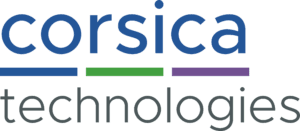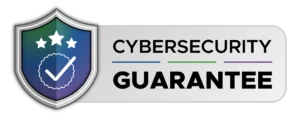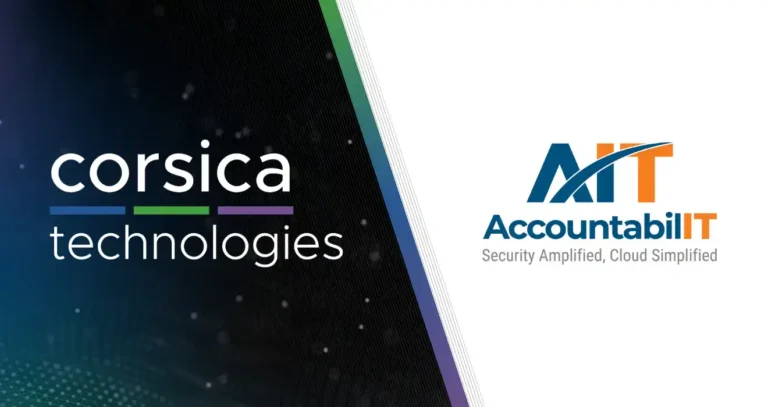How does IT consulting differ from broader, strategic consulting?
Do these advisory services overlap at all?
Which type of consulting is the right choice for the challenges you face?
We’ve got answers to all these questions and more. Let’s dive in!
Key takeaways:
- IT consulting is typically tied to specific technology initiatives, while strategy consulting is broader and more conceptual in scope.
- IT consulting and strategy consulting may overlap in some scenarios.
- IT consulting deliverables often include detailed technical information, whereas strategy consulting has a broader, whole-organization scope.
- Consultants usually tailor their recommendations differently for executives and operational stakeholders.
What is the difference between IT consulting and strategy consulting?
Both types of consulting help to solve business challenges. However, there are key differences between them. Broadly speaking, IT consulting focuses on solving business problems through technology, while strategy consulting addresses high-level issues in terms of business direction, market fit, operational challenges, and cultural considerations.
In some scenarios, the functions of IT consulting and strategy consulting may overlap. For example, a company may implement a new CRM (customer relationship management) solution as part of a broader realignment of marketing and sales to meet changing customer needs. The CRM implementation will be technical, but it plays a part in a larger strategic initiative.
In other cases, a company may pursue an IT initiative merely to solve a technical problem. For example, if an organization’s wireless network can’t keep up with the needs of the team, that would be an IT consulting engagement if it’s not tied to a larger strategic initiative.
Likewise, some strategy consulting engagements don’t touch heavily on technology. For example, a company may pursue an audit of their brand perception, wondering how customers think and feel about them. The findings of this exercise can help guide the company in its future direction—but the findings may not identify any specific technology projects that are required.
Here’s how the two types of consulting compare in detail.
| Aspect | IT Consulting | Strategy Consulting |
| Primary Focus | Technology solutions, systems, and infrastructure | Business growth, competitive positioning, and market strategy |
| Goal | Optimize technology to support high-level strategic goals | Define long-term business direction and objectives |
| Typical Activities | Implementing software (ERP, CRM), cybersecurity, cloud migration, IT architecture design | Market analysis, corporate strategy, M&A planning, organizational restructuring |
| Scope | Strategic, tactical, and operational; everything from 50kft level to hands-on technical work | Broad and conceptual; high-level decision-making |
| Questions Answered | “What technology do we need to achieve our goals?” | “How should the business address specific market challenges to ensure future thriving?” |
| Deliverables | System designs, tech roadmaps, implementation plans | Strategic plans, go-to-market strategies, growth frameworks |
| Expertise Needed | IT systems, software engineering, cybersecurity | Economics, finance, business modeling |

How do deliverables differ between IT and strategy consulting?
IT consulting deliverables are usually technical in nature, while strategy consulting deliverables have a broader, conceptual scope that covers the entire business. The intended audiences are different as well. IT consulting deliverables are generally consumed by leaders from the business and IT as well as hands-on IT technicians. Strategy consulting deliverables are generally consumed by executives and non-technical stakeholders.
Here’s how the two types of consulting deliverables compare in detail.
| Aspect | IT Consulting | Strategy Consulting |
| Planning Deliverables | IT roadmaps, migration plans, implementation schedules | Strategic plans, market entry strategies, growth frameworks |
| Analysis Deliverables | System performance reports, security & compliance audits | Market analysis reports, competitive benchmarking, financial models |
| Design Deliverables | System architecture diagrams, integration blueprints | Organizational design recommendations, operating model frameworks |
| Execution Support Deliverables | Configuration documentation, deployment guides, training manuals | Executive presentations, KPI dashboards, change management plans |
| Audience | IT teams, technical staff | Senior leadership, board members |
| Nature | Technical, detailed, actionable | Conceptual, strategic, decision-oriented |
When should a company hire IT consulting vs. strategy consulting?
A company should choose IT consulting when they face a strategic problem that can be solved with technology. They should choose strategy consulting when they face an operational or strategic problem that goes beyond specific technology systems.
Here are some examples of business problems that require one type of consulting or the other.
IT consulting use cases
- Network infrastructure consulting
- Cloud strategy consulting
- Hardware consulting
- Hardware-as-a-service consulting
- VoIP and telephony consulting
- Workspace consulting (M365, Google Workspace)
- Cybersecurity consulting
- Compliance consulting
- Backup and disaster recovery consulting
- AI strategy consulting
- ERP consulting
- CRM consulting
- EDI consulting
Strategy consulting use cases
- Strategic business direction
- New market or product line
- Business intelligence consulting
- M&A consulting
- Brand perception consulting
How do consultants tailor deliverables for executive vs. operational stakeholders?
Both IT and strategy consultants tailor their deliverables based on the needs of their audiences. Executives and operational stakeholders have different needs in terms of technical detail and decision-enabling information.
Here’s how consultants tailor their deliverables for each type of stakeholder.
Executive stakeholders
- Focus: Strategic insights and big-picture impact.
- Characteristics of deliverables:
- High-level summaries (e.g., executive dashboards, concise slide decks).
- Visual storytelling (charts, infographics, KPIs).
- Business impact framing (ROI, risk, competitive advantage).
- Actionable recommendations tied to organizational goals.
- Tone: Strategic, forward-looking, minimal technical jargon.
Examples of deliverables for executives
- Board presentations
- Strategic roadmaps
- Market opportunity analysis
- Financial models with scenario planning
Operational stakeholders
- Focus: Practical implementation and day-to-day execution.
- Characteristics of deliverables:
- Detailed instructions (step-by-step guides, SOPs).
- Technical specifications (system architecture, process flows).
- Checklists and timelines for execution.
- Training materials for staff.
- Tone: Tactical, detailed, and process-oriented.
Examples of deliverables for operational stakeholders
- Implementation plans
- Configuration documentation
- Process optimization reports
- Technical manuals
- Training schedules and materials

How do I measure ROI from consulting deliverables?
Measuring ROI from consulting initiatives can be challenging. By design, consulting provides both tangible and intangible benefits. Tangible benefits may facilitate ROI calculations, but intangible benefits are far more difficult to measure in this way.
That said, here’s how we recommend our customers calculate ROI from consulting.
1. Use the standard ROI formula
Here is the standard ROI formula:
ROI = Cost of consulting / Net benefit from consulting × 100%
2. Define tangible benefits
A good consulting engagement should create tangible benefits, but the exact nature of those benefits will depend on the strategic goal of the engagement. Our clients typically realize one or more of these benefits from a consulting engagement.
- Revenue growth
- Cost reduction
- Efficiency gains
- Risk mitigation
- Improved decision-making speed
- Greater customer satisfaction
- Greater employee satisfaction
3. Consider how to communicate intangible benefits
Not every consulting benefit can be measured. Qualities like improved brand equity or refined company culture can’t really be quantified. As you consider your ROI from consulting, think about how to communicate the intangible benefits alongside tangible gains and ROI.
4. Define KPIs
For benefits that can be quantified, it’s important to define how you’ll measure them in terms of KPIs (key performance indicators). Common KPIs include:
- Finance: Increased revenue, increased profit, or reduced costs.
- Operations: Reduced work hours, errors, overdue requests, or returns.
- Cybersecurity: Reduced cyberthreats, attack surface, response time, or compliance gaps.
- Marketing and sales: Increased leads, sales opportunities, and sales.
- Customer relationships: Improved NPS (net promoter score), more positive customer reviews, more customer referrals.
- Employee satisfaction: Improved eNPS (employee net promoter score), more positive employer reviews, more hiring referrals.
5. Define your ROI reporting period
If you capture ROI too late or too early, your calculation may not reflect the full value of your consulting engagement. Some benefits take significant time to mature, while others may appear immediately.
This is why it’s important to set expectations with your consultancy. How long does the consultancy believe it will take for the primary benefits to materialize? 30 days? 90 days? A year? It’s critical to get clarity and align your teams around these expectations early on.
With these expectations in hand, you’re prepared to calculate ROI at the right points in the journey, accurately representing the value of consulting.
The takeaway: Choose the right type of consulting
IT consulting and strategy consulting may overlap somewhat, depending on the challenges you face. The best consultancies can align their services around your unique problems. Here at Corsica Technologies, we’ve helped 1,000+ clients solve their biggest challenges in technology and strategy. Contact us today, and let’s determine the next steps on your journey.

Need an expert perspective?
Reach out to schedule a consultation with our IT and strategy consultants.













